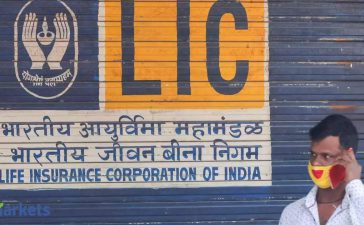The city of Hot Springs recently received a Safe Streets and Roads for All Planning Grant from the U.S. Department of Transportation.
Hot Springs was the only city in Arkansas to be awarded a grant in the first round of the 2023 fiscal year, receiving $280,000, according to information from the U.S. Department of Transportation’s website.
“The Safe Streets for All Grant is to help cities improve their infrastructure, to make things safer,” said Assistant City Engineer Michael Hill.
“They do that in two phases. There’s a planning grant, which is what we received, and that’s to plan where to make those changes or recommendations to get the most bang for the buck. What kind of changes can you make in your city to make the people safer?
“Then there’s a second part of the grant called the implementation part. Before you can do the implementation part, which is actually doing the projects themselves, you have to have a planning grant.”
Video not playing? Click here https://www.youtube.com/embed/QjPjcrpWQ5k
Although the grant is a planning grant, and the city won’t be able to actually implement any of the changes yet, the plan will eventually allow the city to apply to other grants as well as the implementation grant, Hill said.
“We’ll have to show that it’s a viable project. We’ll have to do the data to support that this is a good project for the city because we’ll be in competition. When you start talking about the bigger money, there’s a lot of competition and a lot of cities and a lot of communities,” he said.
“But even if we don’t get the next implementation grant, we can still apply for it next year, but the safety plan that we get can be used for other grants because a lot of times you need to show documentation that this is a good project. We can then go and apply for other grants using this information that we get from this planning grant.”
The total cost of the planning project is estimated to be $350,000, with the federal funds covering 80% of the project and local funds covering 20%, Hill said. While the grant covers $280,000, the city will fund $20,000 through grantee cash and $50,000 will be funded through in-kind staff time.
According to an outline of the grant, $150,000 of the funds will go toward consulting a firm for the action plan, $50,000 will go toward consultant and grant management, $100,000 will go toward the installation of enhanced striping and $50,000 will go toward consulting a firm for the dashboard.
“There are people who are experts in doing this,” said City Engineer Gary Carnahan. “We’re not. So, we’re gonna reach out to those and we’ll request statements of qualifications and review those to select a consulting firm to be our partner in developing a plan.”
The city plans to use the funding to develop a Safe Streets for All Action Plan, including a supplemental planning activity and a demonstration activity, the outline said.
The supplemental planning project will include the completion of a public dashboard on the city’s website with the city’s goals for traffic safety, an interactive map of available crash data, annual map of crashes, map of high inquiry network, crash contributing factors, year-to-date paving amounts, past and present yearly paving lists and budgets, condition of all bridges, a map of safety improvements, and data from demonstration and road conditions, according to the outline.
“We want to do a public facing dashboard, so they can see a lot of the information for our infrastructure that we’re doing, like we want to put our paving list out there, show the streets we’re paving every year, show our past streets,” Hill said.
“I can’t guarantee that’s going to be part of the dashboard, but we want to show the citizens what they’re streets look like, and so they can see the conditions.”
The city also proposed a demonstration activity to test the effectiveness of enhanced striping in reducing crashes, with ladder crosswalks, edge lines and centerlines, the outline said.
“Striping is very well documented that it’s a cheap way to make things safe,” Hill said. “That’s the stripes on the road, you know, the centerline, the outside lines, the crosswalks. We wanted to do some extra striping in what we call historically disadvantaged areas. Maybe they don’t get the attention of some of the bigger streets.
“We’ll do some striping of those areas to try to make sure people know where the center is, they know (where) the outside is, the crosswalks. We may do some enhanced crosswalks where (we do) some maybe special colored painting or some different type of paint that lasts longer so it doesn’t fade as quickly,” he said.
Although they haven’t received a due date for the implementation grant yet, last year the due date was in July, Hill said.
“So, to do this, we’re gonna have to get the consultants to give us a plan in a very short period of time, and so we would like to have them selected before the end of the year, give them a few months to put it together, and then we’ve gotta put an application together if we wanna make this next round of funding,” he said.
“So, we’re doing everything we can to speed up the results and get our information so we can apply for the next year.”











